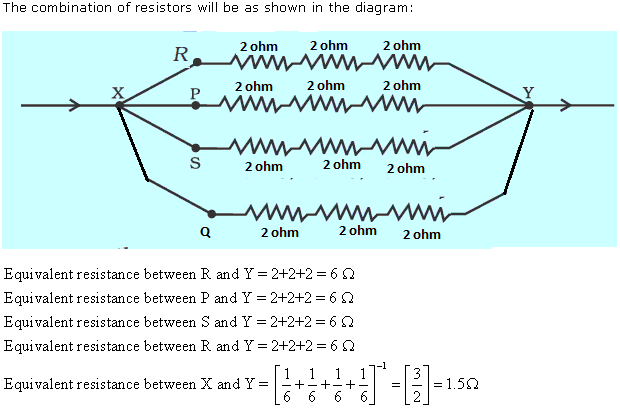Class 10 FRANK Solutions Physics Chapter 4.1 - Ohm's Law and Electrical Circuits
Learn better with our Frank Solutions for ICSE Class 10 Physics Chapter 4.1 Ohm’s Law and Electrical Circuits. Revise the differences between a battery and a cell. Use our solutions to understand how to correctly draw a circuit diagram. Our expert solutions will also help you to solve Physics numerical problems such as calculating the potential difference or finding the value of the resistance of a resistor.
TopperLearning’s study materials are designed according to the latest ICSE Class 10 Physics syllabus. You can explore our complete learning resources such as practice tests, sample papers and video lessons to revise and improve your exam score.
Ohm's Law and Electrical Circuits Exercise 173
Solution 1
Solution 2

Solution 3
Solution 4
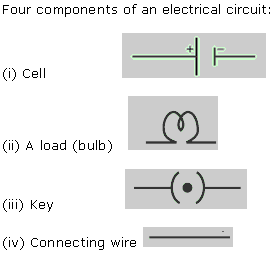
Solution 5
Solution 6
Correct diagram:
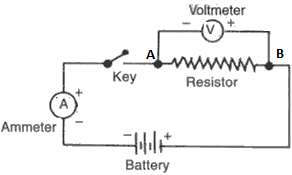
Solution 7
No, it is not always true. E.g. Diode valve, junction diode etc. do not obey Ohm's law.
Solution 8
Its SI unit is 'ohm'.
Solution 9
Solution 10
Solution 11
Solution 12
(i) Nature of conductor: different materials have different concentration of free electrons and therefore resistance of a conductor depends on its material.
(ii) Length of conductor: Resistance of a conductor is directly proportional to the length of a conductor.
(iii) Area of cross-section of a conductor: Resistance of a conductor is inversely proportional to the area of cross-section of the uniform wire.
(iv) Temperature of conductor: In general for metallic conductors, higher the temperature larger is the resistance.
Solution 13
Solution 14
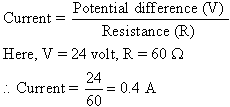
Solution 15
Solution 16
Solution 17
Solution 18
Solution 19
(ii) Alloys e.g. Constantan
(iii) Semiconductors e.g. Germanium
Solution 20

Ohm's Law and Electrical Circuits Exercise 174
Solution 21
According to Ohm's law, the current flowing in a conductor is directly proportional to the potential difference across its ends provided the physical conditions and temperature of conductor remains constant.
Solution 22
Solution 23
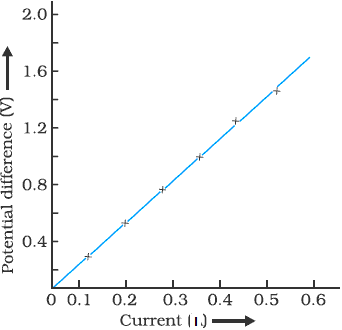
Solution 24
Solution 25
Solution 26
Solution 27
Solution 28
Solution 29
Solution 30
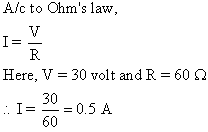
Solution 31

Solution 32
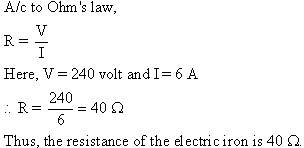
Solution 33

Solution 34

Solution 35

Solution 36

Solution 37

Solution 38

Solution 39

Solution 40
(i) Connecting wires are made of conductors like copper.
(ii) Conductors are used as electrolytes in cells
Ohm's Law and Electrical Circuits Exercise 175
Solution 41
(b) Volt
(c) Coulomb
Solution 42
Solution 43
Solution 44
Its SI unit is newton per coulomb. It is a vector quantity.
Solution 45
Solution 46
Or, W = 5 x 1 = 5 J
Solution 47
(ii) potential difference
Solution 48
(iv) voltmeter
Solution 49
Solution 50
Solution 51
I = Q/t
Solution 52
The direction of electronic current is taken as opposite to the direction of motion of electrons.
Solution 53
Solution 54
Solution 55

Solution 56
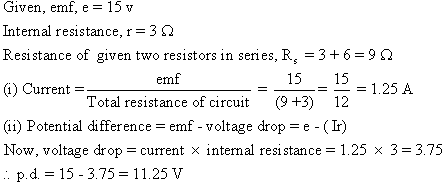
Solution 57

Solution 58
Solution 59

Solution 60
